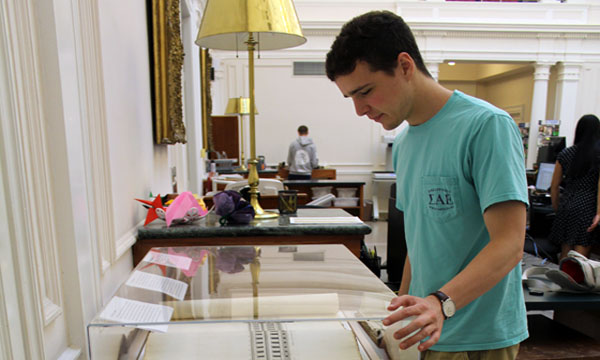
The treasures of Duke’s branch libraries are often hidden. The circulating collections and services of these smaller libraries often claim the pride of place. Both libraries on East Campus, Lilly Library and Music Library, however, hold precious material relating to their subject collections. Known in the library world as “medium rare” (as opposed to the rare materials located in the David M. Rubenstein Library) such primary source materials allow students to examine history first hand.
This fall the Lilly Library added a lobby display case to highlight its unique collections. The inaugural display is one volume of our three-volume Vitruvius Britannicus, a large and early folio devoted to the great buildings of England to be seen in 1717.

An outstanding example of a folio (book) format as well as the awakening of interest in British architecture by its own architects – quoting from the Oxford Art Online – Vitruvius Britannicus was a cooperative venture that appears to have developed out of the desire of a group of booksellers to capitalize on an already established taste for topographical illustration.
Published in 1715 and 1717, the two original volumes each consisted of 100 large folio plates of plans, elevations and sections chiefly illustrating contemporary secular buildings. Many of these plates provided lavish illustration of the best-known houses of the day, such as Chatsworth, Derbys, or Blenheim Palace, Oxon, intended to appeal to the widespread desire for prints of such buildings as well as providing their architects a chance to publicize their current work.
We invite you to visit the Lilly Library on East Campus and to enjoy this “medium rare” folio on exhibit. For more information about the Lilly Library folio or art and image collections, contact Lee Sorensen, the Librarian for Visual Studies.






